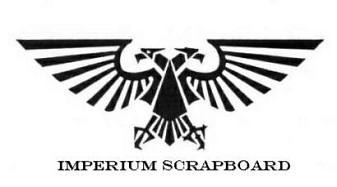

| Max Speed | Acc/Dec | TRR | Toughness | W/DP | Save |
| 32” | 16” | ½ | 5 | 1 | 3+ |
| Max Speed | Acc/Dec | TRR | Toughness | W/DP | Save |
| 32” or 2D6 + 20” | 16” or 2D4 + 4” | ½ | 4-5 or D3+2 | 1 | none |
| Max Speed | Acc/Dec | TRR | AV Front | AV Sides and Rear |
| 24-32” or 2D6 + 20” | 6-12” or 2D4 + 4” | 1 | 9 | 8 |
Glancing Hit | Penetrating Hit | Ordinance Penetrating Hit* | |
1-2 | No Effect | ||
3 | Crew Shaken | ||
4 | 1 | 1 | Crew Stunned |
5 | 2 | 2* | Damage:- Armament Destroyed |
6 | 3 | 3* | Damage:- Immobilized |
7+ | 4 | Vehicle Destroyed! | |
5 | 4 | Vehicle Destroyed and Flipped | |
6 | 5 | Vehicle Explodes! | |
6 | Vehicle Annihilated! |
| Old Ramming Rules Against models or structures with a Toughness. To find the strength of an impact multiply the speed by the frontal armour value and divide the result by 10. If the vehicle reversed into something use the rear armour value. Strength cannot exceed 10 if you get a value over 10 make a note of the difference. The excess is the “reflected damage”, the strength of the damage done to the vehicle from hitting the wall or model. Example:- A Landspeeder traveling at 15” and with frontal armour of 10 hits a wall of toughness 6. 15 x10 ÷ 10 is 15, which exceeds 10 by 5. To see if the wall is damaged the player rolls S10 vs T6. To see if the Landspeeder took any damage he adds 5 to a D6 roll and compares it to an armour value of 10. If he rolled a 5 the vehicle would take a glancing hit, if a 6 a penetrating hit. If the wall is damaged the collision is assumed to inflict D6 wounds or points of damage on the wall. This information is need to establish whether a door is broken down, the wall demolished or how big a hole is created. Against objects with an Armour value. If two vehicles with armour values ram or collide the process is similar. Relative speed needs to be calculated. If the vehicle is rammed in the rear quadrant while moving forward the combined relative speed is that of the faster vehicle with that of the slower subtracted. A slower vehicle can ram a faster in the rear if it intercepts at an angle so this is allowed. If one vehicle rams another in the side the combined relative speed is the speed of the ramming vehicle. This is also the relative speed used for any rams against vehicles that are not moving. A collision or ram against the front of a vehicle uses the combined speeds of the two vehicles. Each vehicle works out the strength at which it hits the other using the combined relative speed and its own armour value for the side making contact. Example:- A Chaos Land Raider (Frontal AV=14) moving at 3¼” collides head on with a Landspeeder moving at 5” (frontal AV=10). Combined speed is 8 ¼”. The LandRaider works out as 14 x 8 ¼ ÷10 which gives a Strength of 11.5, which would round to 12 but is really 10 since reflected damage is ignored when both parties have an Armour Value. The LandSpeeder works out as 10 x 8 ¼” ÷ 10 which rounds to 8. Therefore the LandRaider takes a 8+D6 from the Landspeeder and inflicts a 10 + D6. Structures such as bunkers that have an armour value are treated as static vehicles. Dozer Blades and Rams. Some vehicles have dozer blades, ploughs or rams. This are usually mounted on the front but are sometimes rear mounted on artillery or engineering vehicles. Against an object with a Toughness value the ram absorbs and nullifies D6 of reflected damage. Against a vehicle or building with an armour value the attachment does an extra D6 of damage, so damage is S+2D6. Dozer blades also allow a player to re-roll a “stuck vehicle” result if the vehicle was traveling at 6” or less. |
| If you are looking for more detailed driving rules then the Gorkamorka Rulebook is worth looking at, especially the section on swerving in the Ramming section. Another ruleset worth looking at are the 5th Edition Car Wars rules, which can be picked up at a very reasonable price. The Manoeuvering Template can easily be scaled up for larger vehicles. |
By the Author of the Scrapboard : | |
|---|---|
 | Attack, Avoid, Survive: Essential Principles of Self Defence Available in Handy A5 and US Trade Formats. |
 | |
 | Crash Combat Second Edition with additional content. Epub edition Second Edition with additional content. Crash Combat Third Edition Epub edition Third Edition. |
 | |
 | |